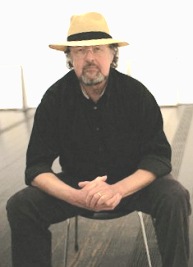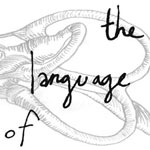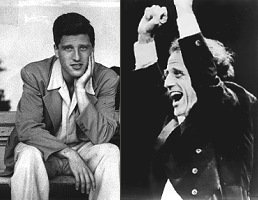 Interpretations continues its twentieth season of provocative programming in New York City. Founded and curated by baritone Thomas Buckner in 1989, Interpretations focuses on the relationship between contemporary composers from both jazz and classical backgrounds and their interpreters, whether the composers themselves or performers who specialize in new music. To celebrate, Jerry Bowles has invited the artists involved in this season’s concerts to blog about their Interpretations experiences. The concert on 12 February 2009 brings us back to Roulette for an evening of Annea Lockwood and Larry Austin, two distinguished composers in the electro-acoustic tradition. Both composers collaborated to tell you more about their concert:
Interpretations continues its twentieth season of provocative programming in New York City. Founded and curated by baritone Thomas Buckner in 1989, Interpretations focuses on the relationship between contemporary composers from both jazz and classical backgrounds and their interpreters, whether the composers themselves or performers who specialize in new music. To celebrate, Jerry Bowles has invited the artists involved in this season’s concerts to blog about their Interpretations experiences. The concert on 12 February 2009 brings us back to Roulette for an evening of Annea Lockwood and Larry Austin, two distinguished composers in the electro-acoustic tradition. Both composers collaborated to tell you more about their concert:
“The Outlanders” concert at 8 p.m., Thursday, Feb. 12, at Roulette:
Composers Annea Lockwood and Larry Austin present recent octophonic compositions as part of the twentieth season of the Interpretations Series. We have named ourselves “The Outlanders”, because both of us grew up and established our musical personalities in the “outlands”, that is, outside of New York City: Annea from New Zealand, Larry from Texas. We feel that our music thrives because it is neither uptown nor downtown: it is “out-of-town”. This is not to say that we aren’t cosmopolitan composers, for both of us have had our music performed around the world in installations, new music festivals, symphony concerts, galleries, computer music conference/festivals, chamber and solo concerts, the whole lot. Our compositions have been recorded and released on major labels; our academic careers have been fulfilling at major universities around the USA. The concert on Feb. 12 features two world premieres: Austin’s “ReduxTwo”, for piano and octophonic computer music, performed by pianist Joseph Kubera; and “In Our Name”, a collaborative composition by Lockwood and Buckner for baritone voice, cello, and electronics, performed by baritone Thomas Buckner and cellist Theodor Mook. Other works on the concert feature New York premieres of Austin’s “Redux”, for violinist Patricia Strange, and his “Tableaux”, for saxophonist Stephen Duke, also including a new video component by Kevin Evensen. Lockwood’s recent music for the Merce Cunningham Dance Company,”Jitterbug”, for David Behrman, John King, Stephan Moore and electronics, is included as well.
It is an honor to be participating in the celebration of the Interpretations Series twentieth year. Guided by Thomas Buckner’s expansive vision, the series’ range is refreshingly broad and many new works have been created for it through his commissioning program over the years. For Annea this program is particularly exciting because it involves collaboration with two people who have been a strong influence on the shape of her life as a composer, Larry Austin and Thomas Buckner. As one of the editors of Source Magazine, Larry’s support was a major influence on her decision to move to the US in the early 70’s; and Annea and Tom have worked together since 1989 in one of the core collaborations of her life as a composer.
We congratulate Thomas Buckner, Gladys Serrano and her colleagues at Mutable Music on twenty years of superb presentations, and invite you to attend our concert and enjoy!
For more information: Interpretations / Roulette


 If you’ve been following the stimulus bill, you probably know two things: It includes $50 million for the NEA, and on Tuesday the Senate Democrats announced that they don’t have the votes to pass it and they’re looking a ways to cut it down. John Gizzi at the conservative publication Human Events
If you’ve been following the stimulus bill, you probably know two things: It includes $50 million for the NEA, and on Tuesday the Senate Democrats announced that they don’t have the votes to pass it and they’re looking a ways to cut it down. John Gizzi at the conservative publication Human Events  Vicki Ray
Vicki Ray The recent deaths of both George Perle and Lukas Foss are part of the sad but expected passing, of composers who came of age in the 1940s and 50s. But a slight shock went through me with Douglas Britt’s
The recent deaths of both George Perle and Lukas Foss are part of the sad but expected passing, of composers who came of age in the 1940s and 50s. But a slight shock went through me with Douglas Britt’s 
 Lukas Foss
Lukas Foss